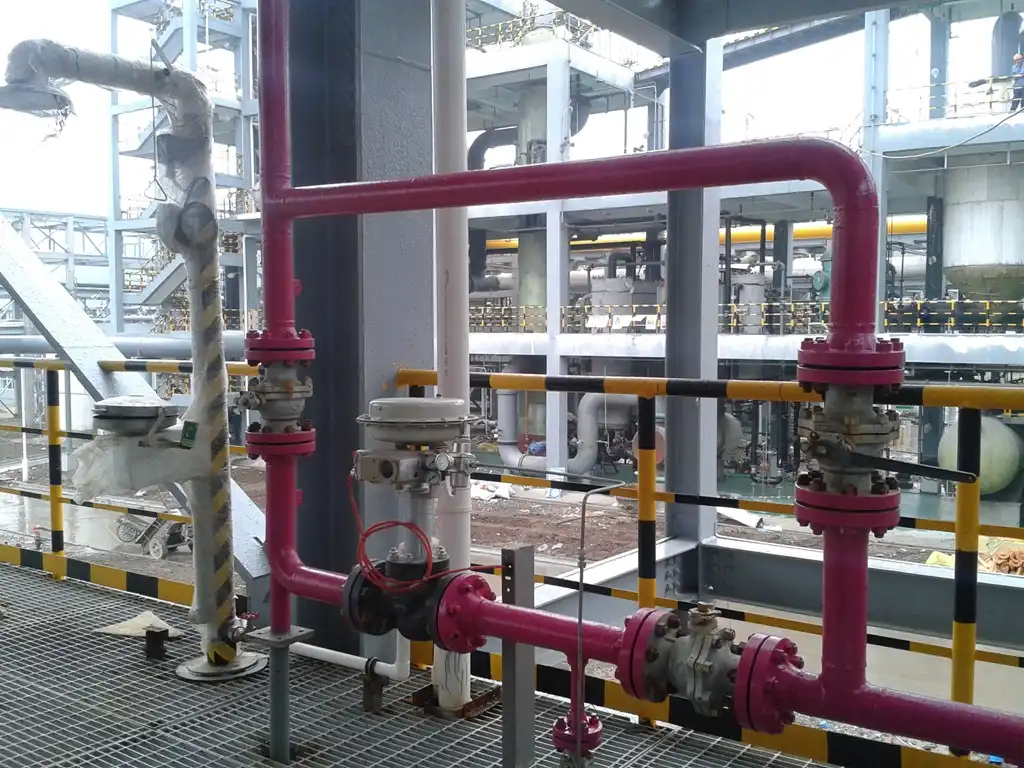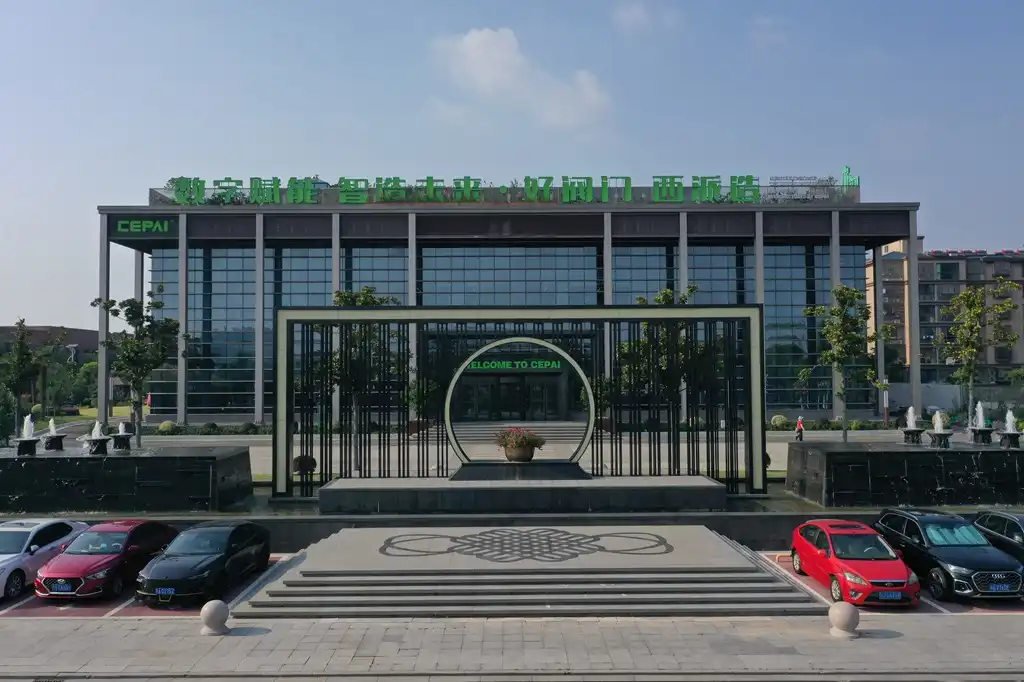Types of Actuators and Their Impact on Control Valve Performance
Pneumatic Actuators: Rapid Response and Reliability
Pneumatic actuators are widely used in control valve applications due to their quick response times and reliability. These actuators utilize compressed air to generate the force needed to operate the valve. The rapid response of pneumatic actuators makes them ideal for applications requiring frequent cycling or fast adjustments to process conditions.
One of the key advantages of pneumatic actuators is their simplicity and robustness. With fewer moving parts compared to other actuator types, they offer increased durability and lower maintenance requirements. This reliability is particularly valuable in harsh industrial environments where consistent performance is crucial.
However, pneumatic actuators may have limitations in terms of precise positioning, especially in applications that demand extremely fine control. The compressibility of air can sometimes lead to slight variations in valve positioning, which may be a consideration in certain high-precision processes.
Hydraulic Actuators: High Force and Precision
Hydraulic actuators excel in applications requiring high force output and precise control. These actuators use hydraulic fluid to generate the necessary force for valve operation. The incompressibility of hydraulic fluid allows for excellent position accuracy and repeatability, making hydraulic actuators suitable for demanding control scenarios.
The high force-to-size ratio of hydraulic actuators makes them ideal for large valves or those operating under high pressure conditions. This characteristic enables efficient operation of heavy-duty control valves in industries such as oil and gas, where substantial forces are often required.
While hydraulic actuators offer superior precision and power, they typically have more complex systems compared to pneumatic actuators. This complexity can lead to higher initial costs and more intensive maintenance requirements. Additionally, the potential for hydraulic fluid leaks must be carefully managed to prevent environmental and safety concerns.
Electric Actuators: Versatility and Advanced Control
Electric actuators have gained popularity in recent years due to their versatility and advanced control capabilities. These actuators use electric motors to drive the valve, offering a wide range of control options and easy integration with digital control systems. The precision of electric actuators makes them suitable for applications requiring accurate positioning and repeatable performance.
One of the main advantages of electric actuators is their ability to provide detailed feedback on valve position and performance. This feature allows for more sophisticated control strategies and easier diagnostics. Electric actuators also offer the flexibility to easily adjust valve characteristics through software, enabling fine-tuning of system performance without physical modifications.
However, electric actuators may have limitations in hazardous environments where explosion-proof designs are required. They can also be more susceptible to damage from power surges or electrical failures compared to their pneumatic or hydraulic counterparts. Careful consideration of the operating environment and backup power systems is essential when selecting electric actuators for critical applications.
Factors Influencing Actuator Selection for Optimal Valve Performance
Process Requirements and Operating Conditions
Selecting the appropriate actuator type for a control valve begins with a thorough understanding of the process requirements and operating conditions. Factors such as required response time, positioning accuracy, and the frequency of valve adjustments play a significant role in determining the most suitable actuator.
For processes that demand rapid changes in flow rates or quick shutoff capabilities, pneumatic actuators often prove to be the best choice due to their fast response times. On the other hand, applications requiring precise control over a wide range of operating conditions may benefit from the accuracy of hydraulic or electric actuators.
Environmental factors, such as temperature extremes, corrosive atmospheres, or the presence of explosive gases, also influence actuator selection. Each actuator type has its own set of environmental limitations that must be carefully considered to ensure reliable and safe operation of the control valve system.
Valve Size and Operating Torque
The physical characteristics of the valve, including its size and the torque required to operate it, significantly impact actuator selection. Larger valves or those operating under high pressure conditions generally require actuators capable of delivering higher force outputs.
Hydraulic actuators excel in high-torque applications due to their ability to generate substantial force in a compact package. This makes them particularly suitable for large control valves in industries such as petrochemical processing or power generation.
For smaller valves or those with lower torque requirements, pneumatic or electric actuators may offer more cost-effective solutions while still providing adequate performance. The balance between actuator size, power, and cost must be carefully evaluated to achieve optimal valve performance without unnecessary oversizing.
Control System Integration and Automation Requirements
The level of integration required with existing control systems and automation infrastructure is a crucial factor in actuator selection. Modern industrial processes often demand seamless communication between valve actuators and centralized control systems for efficient operation and monitoring.
Electric actuators offer significant advantages in terms of control system integration, providing easy connectivity with digital control networks and the ability to transmit detailed performance data. This level of integration supports advanced process control strategies and facilitates predictive maintenance approaches.
While pneumatic and hydraulic actuators may require additional components for digital integration, they can still be effectively incorporated into automated systems. The choice often depends on the existing infrastructure and the desired level of control granularity in the overall process.
Optimizing Control Valve Performance Through Actuator Innovation
Smart Actuators and Digital Control
The advent of smart actuators represents a significant leap forward in control valve technology. These advanced actuators incorporate built-in sensors, microprocessors, and communication capabilities, enabling real-time monitoring and adjustment of valve performance. Smart actuators can provide detailed diagnostics, predict maintenance needs, and automatically adapt to changing process conditions.
By leveraging digital control technologies, smart actuators enhance the overall efficiency and reliability of control valve systems. They allow for more precise control, reduced energy consumption, and improved process stability. The ability to remotely monitor and adjust valve parameters also contributes to increased operational safety and reduced downtime.
As industrial processes become increasingly complex and automated, the role of smart actuators in optimizing control valve performance is expected to grow. Their integration with Industrial Internet of Things (IIoT) platforms opens up new possibilities for data-driven decision-making and predictive maintenance strategies.

Hybrid Actuator Systems
Innovative hybrid actuator systems combine the strengths of different actuator types to achieve superior performance in challenging applications. For example, electro-hydraulic actuators merge the precision of electric control with the power of hydraulic systems, offering a balance of accuracy and force output.
These hybrid solutions can address specific performance requirements that may be difficult to meet with traditional single-type actuators. They provide greater flexibility in valve control, allowing for rapid response when needed while maintaining high precision during steady-state operation.
The development of hybrid actuator systems reflects the industry's drive towards more versatile and efficient control valve solutions. As technology continues to advance, we can expect to see further innovations in actuator design that push the boundaries of valve performance and adaptability.
Energy Efficiency and Sustainability Considerations
The impact of actuator selection on energy efficiency and sustainability has become an increasingly important consideration in control valve applications. Different actuator types have varying energy consumption profiles, which can significantly affect the overall efficiency of industrial processes.
Electric actuators, particularly those incorporating variable speed drives, often offer superior energy efficiency compared to traditional pneumatic or hydraulic systems. They allow for precise control of motor speed and torque, reducing energy waste during partial load conditions.
However, the environmental impact of actuator choice extends beyond energy consumption. Factors such as the manufacturing process, materials used, and end-of-life recyclability all contribute to the overall sustainability of the control valve system. As industries strive to reduce their carbon footprint, the selection of eco-friendly actuator technologies is likely to become a more prominent factor in valve specification processes.
Conclusion
The choice of actuator type significantly influences the performance of control valves across various industrial applications. Pneumatic actuators offer rapid response and reliability, hydraulic actuators provide high force and precision, while electric actuators bring versatility and advanced control capabilities. Factors such as process requirements, valve characteristics, and control system integration play crucial roles in determining the optimal actuator for a given application. As technology advances, innovations like smart actuators and hybrid systems continue to push the boundaries of control valve performance, offering new possibilities for efficiency, precision, and sustainability in industrial processes.
FAQs
1. What is the most common type of actuator used in control valves?
Pneumatic actuators are the most common type due to their simplicity, reliability, and fast response times.
2. Can actuator type affect valve lifespan?
Yes, the actuator type can impact valve lifespan by influencing factors such as wear, stress on components, and maintenance requirements.
3. How do environmental conditions affect actuator selection?
Environmental factors like temperature, humidity, and potentially explosive atmospheres significantly influence actuator selection to ensure safe and reliable operation.
Expert Control Valve Solutions for Optimal Performance | CEPAI
At CEPAI Group Co., Ltd., we specialize in providing high-quality control valves and actuators tailored to meet the demanding requirements of the oil and gas industry. Our extensive experience in valve manufacturing enables us to offer innovative solutions that optimize performance and reliability. As a leading control valve supplier and manufacturer, we understand the critical role that actuator selection plays in valve performance. For expert guidance on choosing the right control valve and actuator combination for your specific application, contact our team of specialists at cepai@cepai.com.

References
Smith, J. (2021). "Advanced Control Valve Actuators: Performance and Selection Criteria." Journal of Process Control Engineering, 45(3), 217-232.
Johnson, A. & Lee, M. (2020). "Comparative Analysis of Pneumatic, Hydraulic, and Electric Actuators in Industrial Valve Applications." International Journal of Valve Technology, 18(2), 89-104.
Brown, R. (2022). "Smart Actuators: Revolutionizing Control Valve Performance in the Digital Age." Automation and Control Systems, 33(4), 412-428.
García-López, C. et al. (2019). "Energy Efficiency Considerations in Control Valve Actuator Selection." Energy Procedia, 158, 2345-2350.
Wilson, D. & Taylor, S. (2021). "Hybrid Actuator Systems: Bridging the Gap in Control Valve Performance." Industrial Process Control, 27(1), 55-70.
Thompson, E. (2020). "The Impact of Actuator Type on Control Valve Reliability and Maintenance." Reliability Engineering & System Safety, 195, 106726.





